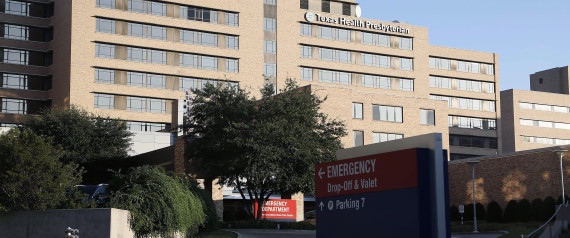
More details of exactly what happened in Dallas when three people there -- a Liberian man and two nurses -- were infected with Ebola are revealed today (Nov. 14) in a new report.
One of the new details is that 12 people who had contact with one or more of the Ebola patients were tested for the virus during their 21-day monitoring periods, because these 12 individuals developed a fever or other symptoms that can occur with the disease, according to the report, from the Centers for Disease Control and Prevention (CDC). However, none these people actually had Ebola.
In addition, of the nearly 150 Dallas health care workers who were monitored daily for symptoms of Ebola, 20 volunteered to quarantine themselves for the three-week monitoring period, the report said.
The report also gave the age of the first Ebola patient in Dallas — Thomas Eric Duncan — as 45. Previous reports had given his age as 42.
The age given in the new report came from Duncan's medical records, after officials determined this was the most reliable source of information about his age, a CDC representative confirmed to Live Science. [Where Did Ebola Come From?]
Duncan traveled from Liberia to the United States in September to visit his family. But he became ill with a fever and abdominal pain, and was treated in the emergency department of Texas Health Presbyterian Hospital on Sept. 25. He was released, because he was not then suspected of having Ebola. But he returned to the hospital three days later, when he tested positive for the virus. He was treated in an isolation unit at the hospital, but died Oct. 8.
Health officials originally monitored 48 people in Dallas who had contact with Duncan, including 17 people in the community, 10 people who rode in the same ambulance as Duncan before it was cleaned, and 21 health care workers who did not wear adequate personal protective equipment (PPE) when they had contact with Duncan after he first arrived at the hospital on Sept. 25.
But after two nurses — Nina Pham and Amber Vinson — tested positive for Ebola, the number of people monitored was expanded to include 147 health care workers who had contact with Duncan, even if they were wearing PPE.
Pham and Vinson did use PPE in their care of Duncan, the report said.
By Nov. 7, everyone in Dallas who was being monitored for Ebola symptoms had passed through the 21-day monitoring period.
"The Dallas Ebola cluster highlights many important issues that might be encountered by other jurisdictions in which an Ebola diagnosis is made locally," the researchers said. These include the need to identify Ebola patients when they first show up at a hospital or emergency department, and the need to develop protocols to safely transport suspected Ebola patients to the hospital, the researchers said.
Since the Dallas cases, a doctor in New York who had treated Ebola patients in Guinea tested positive for Ebola. Officials in New York had the benefit of learning from the Dallas experience, Gov. Andrew Cuomo said at a news conference in October, at the time the case was announced.
Because the doctor, Craig Spencer, notified officials before he went to the hospital, a specially trained team of health care workers was able to transport him while they wore proper PPE. On Tuesday (Nov.11), Spencer was declared free of the virus and released from the hospital. LINK


